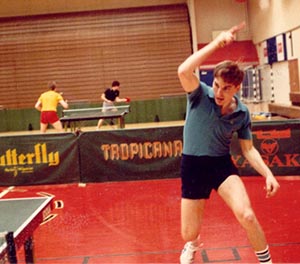Tip of the Week
North American Championships
They were held this past weekend (Sat-Mon) in Toronto. Here's the ITTF page for the event, which has results, articles, pictures, quotes, and video. Here's the ITTF Press Release.
The big news is that USA swept everything over Canada, all eight events – Men's and Women's Singles and Teams, Cadet Boys' and Girls' Singles, and Junior Boys' and Girls' Teams. Historically, there have been many USA-Canada battles for many decades, and it's usually been competitive. But the strength and depth of USA Cadets is just too strong for Canada. As I've blogged a number of times, USA is stronger at the cadet level than it has ever been in history, and it's not even close. (Cadets is under 15, but due to dates used, some players are eligible after turning 15.)
But USA had to make two near miraculous comebacks to get the 8-0 sweep. In the Women's Singles Final, Lily Zhang (USA) was down 0-3 to Mo Zhang (CAN) before coming back to win 4-3. In the Men's Team Final, USA (Jim Butler, Timothy Wang, Kanak Jha) was down 0-2 before coming back to win 3-2. (Here's the match sheet.)
But USA overall dominance was rather obvious. In Women's Singles, seven of the eight quarterfinalists were USA, with Mo Zhang the only Canadian. In Men's Singles three of the four semifinalists were USA, including cadets Kanak Jha and Jack Wang. In Cadet Boys, all four semifinalists and seven of the eight quarterfinalists were USA. In Cadet Girls, all four semifinalists were USA.


 Photo by Donna Sakai
Photo by Donna Sakai


